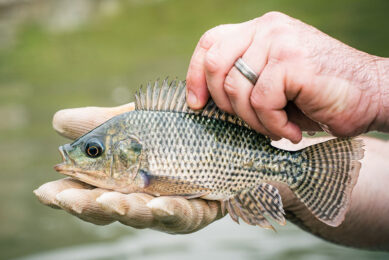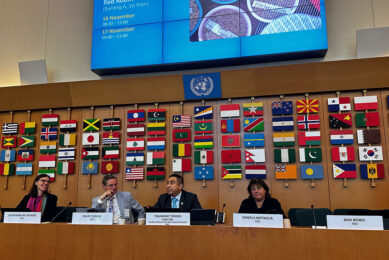A growing industry comes with challenges

A few numbers, in the EU, we consume around 23.1 kg of seafood per year. 24% of this comes from aquaculture. The two most consumed aquaculture species in the EU are salmon and mussel. Nevertheless, the EU production of fish and shellfish is small, when compared to what is produced in the rest of the world.
In China, more than 60% of the global aquaculture is produced. Soon, the global farmed fish volume will surpass wild fisheries as the main source of seafood. This in turn is great for the aquafeed industry, and more research is being done to find the best possible diet formulation strategies for farmed fish species.
Driven by China
And the numbers are there that back up the growth of the feed production for fish. According to a research report from MarketsandMarkets, the aquafeed market was valued at $62,427.8 million in 2013, is estimated to be $69,998.1 million in 2014, and is projected to reach $123,990.3 million by 2019, at a Compound Annual Growth Rate (CAGR) of 12.3% from 2014 to 2019. In terms of consumption, the market is estimated to be 53,824.8 thousand metric tons in 2014, with a projected CAGR of 10.7% from 2014 to 2019. Higher incomes in the developing world, apperception of aquaculture products as being premium, and dietary changes have fuelled the boom in aquafeed production. The availability of fish meal and other protein sources has also ignited the growth of the relatively young industry in the animal protein sector, accounting for the bulk of the global increase in demand for aquafeed in Asia. This is driven largely by China and the huge potential for the fresh water fish segment. India, another rapidly growing aquaculture market, is also witnessing a significant rise in aquafeed demand.
Alternatives to marine ingredients
At the same time, the growth of the aquafeed market comes with growing awareness of the environment. Although marine ingredients are a great and nutritious ingredient for fish diets, the sustainability of using wild caught fish to produce fish meal and fish oil is questionable from an environmental standpoint. Looking for better diets therefore also entails looking for more sustainable ingredients, as in: alternatives to marine based ingredients. Luckily, there are good alternatives to marine based ingredients out there. Insect based proteins and oils are named as good alternatives to the fish based versions. And this is backed up by many studies in different farmed aqua species. Black soldier fly larvae for example are a high-value feed source, rich in protein and fat. They contain about 40–44% crude protein. Although the amount of fat is variable, several experiments have shown that black soldier fly larvae could partially or fully substitute for fishmeal in fish diets.
Enzyme use to grow
But alternatives to fish meal can also be sought in algae or vegetable proteins. Regarding the latter, this also comes with its own challenges. Fish diets with a large proportion of plant based feed ingredients, also contain a significant source of phosphorus, bound as phytate. Fish, like other animals cannot degrade phytate, however this phosphorus resource can be tapped by applying the enzyme phytase. While enzyme use in terrestrial animal feeds has now become a global standard, utilisation of enzymes in aquaculture feeds has lagged considerably. I foresee a growth in the use of enzymes in fish diets. And when the legislation is changed regarding to the use of insect meal in fish diets, this will open up a whole new market for fish feed ingredients. Fish diets will never be the same again.
Join 26,000+ subscribers
Subscribe to our newsletter to stay updated about all the need-to-know content in the feed sector, three times a week. Beheer
Beheer









 WP Admin
WP Admin  Bewerk bericht
Bewerk bericht